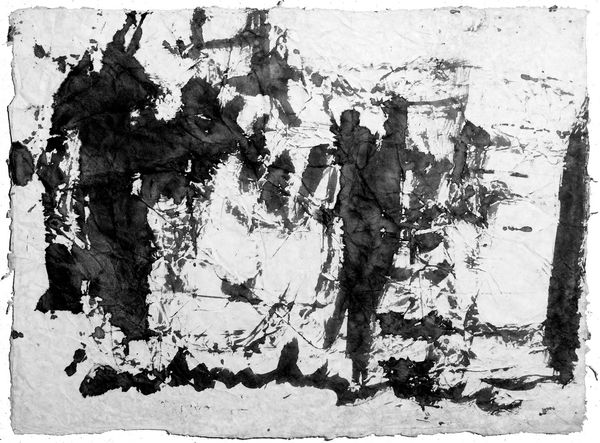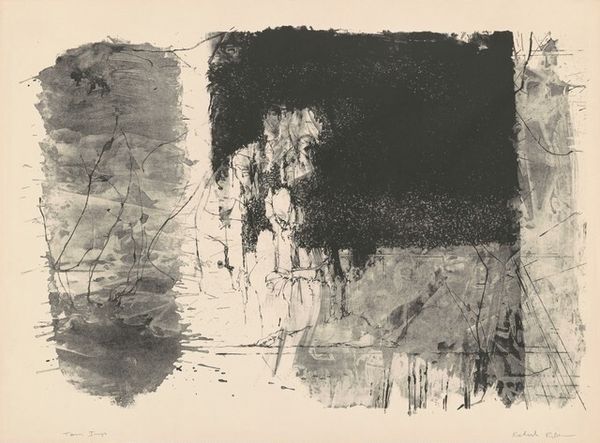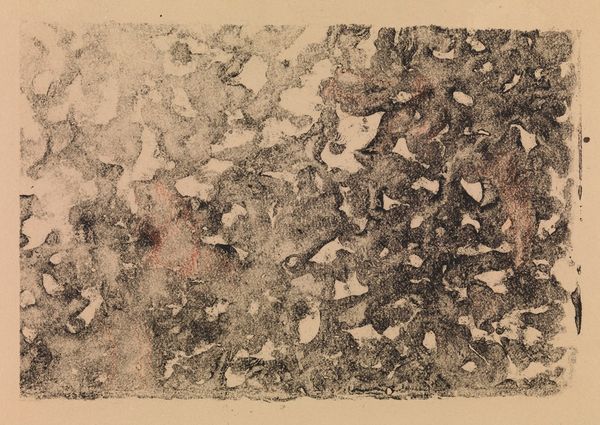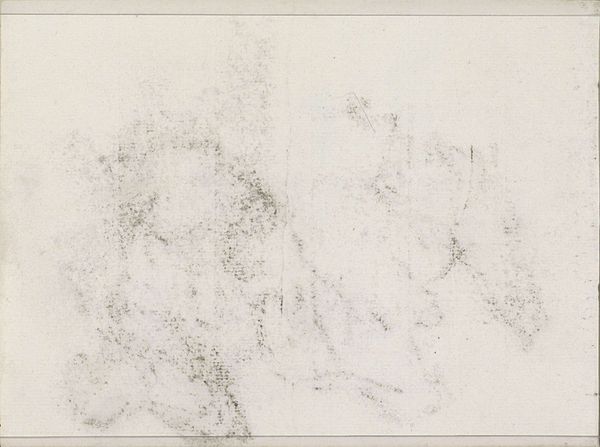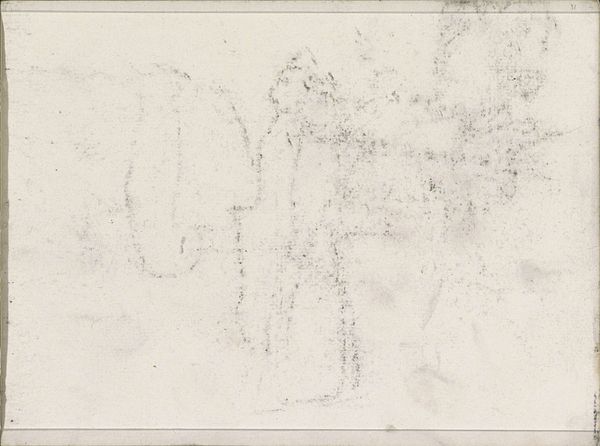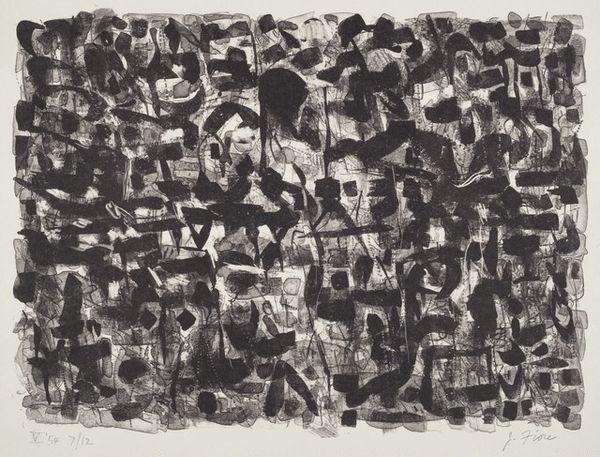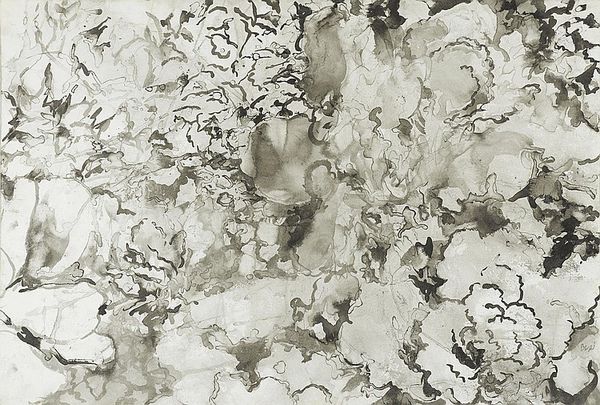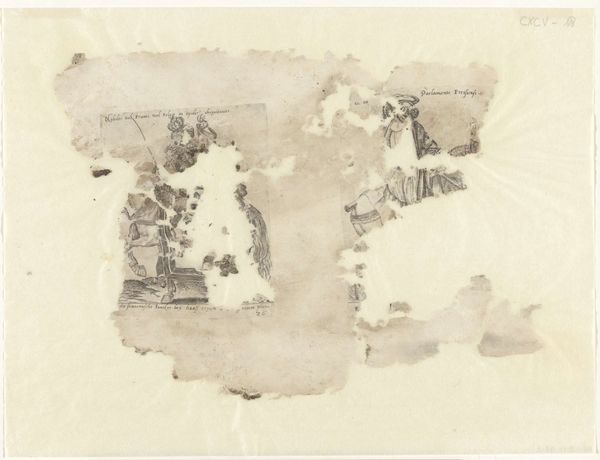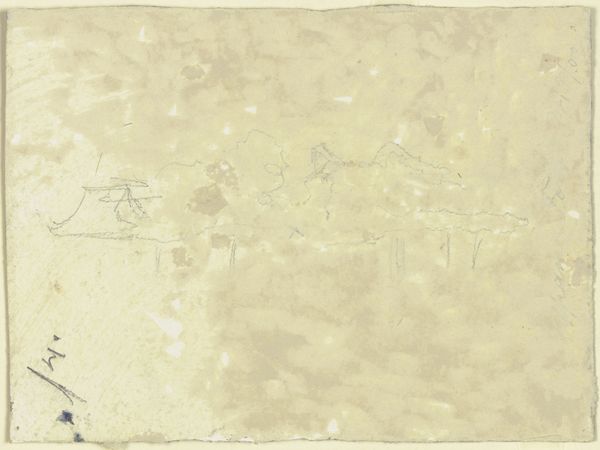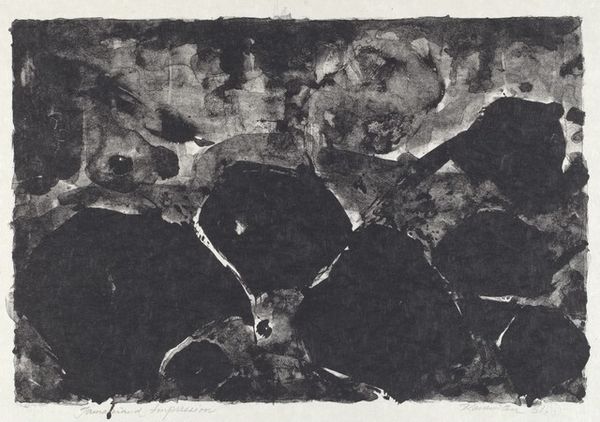
#
abstract-expressionism
#
abstract expressionism
# print
#
landscape
#
form
#
geometric-abstraction
Copyright: National Gallery of Art: CC0 1.0
Editor: We're looking at Misch Kohn's "Grand Canyon" from 1961, a black and white print that is reminiscent of abstract expressionism, yet hints at a landscape. It feels like a memory of a place rather than a depiction. How do you read this work? Curator: This print offers a fascinating lens through which to consider the public perception of nature during the mid-20th century. The Grand Canyon, a symbol of American sublime, is here filtered through abstract expressionism. How does this abstraction affect our understanding of the Grand Canyon's cultural role? Does it become less about nature's grandeur and more about the individual artist's experience? Editor: That's interesting! So you're suggesting the artist is less interested in the Canyon itself and more interested in conveying personal experience? Curator: Exactly! Think about the social context: post-war America, anxieties around progress and industrialization, a yearning for authenticity. By abstracting this iconic landscape, Kohn potentially critiques the romanticized view of nature prevalent in earlier landscape painting. What's left is not a postcard-perfect vista but a raw, almost turbulent expression of…what, do you think? Editor: Maybe a raw, emotional reaction to the changing landscape, the canyon becoming almost a metaphor for something larger than just a geographical location. The lack of color almost feels…stark. Curator: The starkness could also speak to anxieties of the time. Was the sublime landscape somehow threatened by development or societal shifts? Kohn's print prompts us to consider the politics embedded within landscape imagery – who gets to represent nature, and to what end? Editor: I never considered how the way we represent a landscape could reflect social anxieties. It definitely makes me think differently about abstract art's role. Curator: Precisely! Art acts as a barometer for society. By understanding the context in which art is made and viewed, we gain insight into cultural values and belief systems. This piece also shows the public’s relationship with land.
Comments
No comments
Be the first to comment and join the conversation on the ultimate creative platform.


